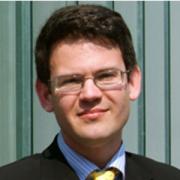Savor the insights captured in this final issue of CBR and stay tuned for new mechanisms that will help the Cutter community take stock of both past and present and prepare successfully for the future.
This issue of Cutter Benchmark Review, the 10th and final installment in our annual IT budgeting series, can be summed up by the subtitle: "Folks, It's Time to Remodel." This theme manifests itself in three ways. The first two relate to IT budgeting practices; the third relates to CBR itself.
First, it is clear that our IT homes need a firmer footing, and (as you'll read in Dennis Adams's article) there is a need for rethinking the fundamental relationships between the IT function, the IT budget, and all the other business entities within organizations.
Second, it is also clear that our IT homes need more light and reconfigurable spaces, and (as you'll read in Bob Benson's piece) there is much we can gain from increasing the transparency and agility of the IT budgeting process.
Third, sometimes to transform a great space into an even better one, you need to strip everything down and start from scratch, and (as you'll read in CBR Managing Editor Cindy Swain's message at the end of this issue) Cutter is in the process of doing exactly that with CBR.
Let's take a closer look at these renovations.
IT'S TIME TO SHORE UP OUR FOUNDATIONS
As always, this issue of CBR invited two authors -- one from the IT research community and the other from IT industry -- to explore our latest survey data. Our first author, providing us with the academic perspective, is Dennis Adams. Dennis has more than three decades of experience researching, writing about, and advising organizations on information systems management, leadership, and strategy. He has been involved in the CBR annual IT budget issue since its very start and, in this year's very special issue, he takes a long, careful look at a full decade of accumulated data and insights.
In his article, Dennis brings us back to the basics, arguing that IT managers need to more closely map the IT spend to four key business documents -- the income statement, the balance sheet, the statement of retained earnings, and the cash flow statement -- so that, in his words, the IT budget is "obviously defendable as being supportive of the overall direction of the company." In short, Dennis calls for reestablishing the business foundations of the IT spend. From this firm footing, he goes on to analyze the trends in the data from the past 10 years, looking at spending growth and spending reduction, and the relationships these have with wider economic movements. Dennis next looks at the interplay between IT and value, again from the vantage point of the key strategic goals of the enterprise, providing sound advice for both measuring and communicating this value. Finally, he looks at the ability of the IT function to contribute directly to the "make-money," "save-money," and other key activity areas of the firm.
IT'S TIME TO ADD MORE WINDOWS AND DOORS
With these foundations in place, we can move on to renovating the interior plan. In our second article, Cutter Fellow Bob Benson provides us with a practitioner's perspective on the data, leveraging more than 40 years' experience in the IT sector. Bob is another long-time Cutter Consortium contributor to the CBR IT budgeting series and has written more than 100 Cutter Advisors, Executive Reports, Executive Updates, and journal articles exploring IT strategy and governance.
Bob begins by drawing a clear line in the sand when he articulates his central proposition, that "IT costs, budgets, and cost management are a critical part of IT governance and effective IT management," and summarizes the many ways in which this proposition has manifested over the 10 years of the IT budgeting survey series. He then explores what he considers a major cause for concern; namely, the relative lack of change and agility in the ways in which we drive and manage the IT spend. Next, Bob looks at the need for greater transparency in the IT budgeting process as well as the relationship between information sharing and perceived value. Bob follows this examination by reviewing current IT governance practice and the need for more interaction and engagement between IT and other business units. Finally, he looks at the roles of responsiveness, best practice, and full-cost thinking in IT leadership. Altogether, Bob's article serves as a great to-do list for would-be IT budget renovators: add more windows, add more doors, add more partitions that are reconfigurable, adopt a unified design, and eliminate wasted space.
IT'S TIME TO RENOVATE OUR WORKSPACE
Both Dennis's sound advice for "wise managers" and Bob's conclusion (offering six key pieces of advice based on our full decade of data) richly exemplify the CBR philosophy of carefully considering fresh data and transforming it into useful knowledge.
For years, the official goals of CBR have been to enable readers to do the following:
-
Look critically, objectively, and through a variety of lenses at the business technology issues that directly affect your enterprise.
-
Understand how your organization compares to others in your industry and/or around the world.
-
Recognize the potential impact of today's trends on the future health and direction of your company.
-
Identify key IT initiatives worth pursuing and -- just as importantly -- those you should avoid.
-
Support your IT initiatives with unbiased research and judicious statistical analysis.
Take another look at that list. With minor tweaking, it would be a pretty decent mission statement for an IT department, wouldn't it? It's not too strange a parallel; after all, Cutter's goal for CBR has been to create value for IT managers, just as IT managers seek to create value for their organizations.
This brings us to the third renovation: CBR itself. Just as Dennis argues that IT needs to constantly reestablish its foundational value-creating role in the enterprise, and Bob argues that IT needs to be more transparent, engaged, and flexible, we at Cutter have decided that it's time to rethink the CBR format and find new, more effective ways to deliver on the CBR vision.
So savor the insights captured in this final issue of CBR and stay tuned for new mechanisms that will help the Cutter community take stock of both past and present and prepare successfully for the future.



